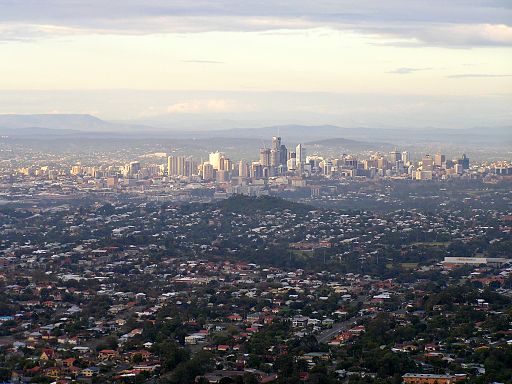
Two speed housing market favours Brisbane
Brisbane’s housing market is being sheltered from a more severe national downturn in home values with a two-speed housing market favouring regions with enhanced affordability, larger home offerings and lifestyle trends.
New data released on Monday shows Brisbane house prices grew 0.22 per cent in April, more than halving the rate of growth from March, however the city continues to lead the country for annual price growth, with home values increasing 26.27 per cent in the 12 months to the end of April.
However Sydney, Hobart and regional Western Australia all reported negative growth of between 0.1 and 0.44 per cent in April.
PropTrack’s second national home price index measures monthly changes in home values across the country based on sales results on realestate.com.au and valuer-general data.
The report found Brisbane was still among the most affordable in the country for houses, with a median house value of $762,000 compared to Sydney’s $1.259m and Melbourne’s $902,000.
Brisbane unit values grew by 0.1 per cent to $447,000 in April while Sydney, Adelaide, Perth, Hobart and the ACT all recorded negative apartment growth.
Melbourne house values rose 0.01 per cent in April and units grew by 0.3 per cent.
PropTrack economist and report author, Paul Ryan, said the Brisbane market continued to see an easing of house price growth in April but it was not expected to progress into negative growth territory.
“At the moment, negative growth for Brisbane doesn’t look imminent,” Mr Ryan said. “I would be more bullish about the Brisbane or Adelaide markets.
“This is a continuation of the trend in the real estate market of a slowdown in 2022. Capital city prices on average were flat across the country.”
Apollo Auctions director Justin Nickerson said auctions continued to be a strong way to buy and sell homes in Brisbane and the expectation of sellers in April was now more in line with the current market than it had been so far this year.
“The big change this year is the quantity of bidders has dipped,” Mr Nickerson said. “Last year you might have eight bidders, now you’ll get four but they are strong bidders. That’s all we need to get the transaction done.”
He said the trend to sell prior to auction, which had been a feature of the property market in February and March, had pulled back a little, indicating an increase in market velocity in April.
The Wide Bay region was the third strongest performing market in the country in April, according to the Index, with house price growth of around 1.5 per cent after being flat in March. The Hunter Valley in New South Wales and Adelaide North were the top two markets for the month.
“Ipswich is also up over 1 per cent in the month and the Gold Coast has also had a 1 per cent increase so that shows the strength in those markets,” Mr Ryan said.
“We’ve been talking about this regional resurgence for some time now, this two speed market and Brisbane and Adelaide are benefiting from that trend with enhanced affordability, larger homes, and lifestyle trends that are important to buyers.”
Because of these factors, Mr Ryan said Brisbane and Adelaide would be less affected by the impact of a sharp interest rate rise.
“Sydney and Hobart have been the strongest performing cities and those are the markets where affordability has been stretched the most, so the prospect of higher interest rates will bite those markets a bit more,” Mr Ryan said.
“If we are in a generalised downturn, Brisbane won’t be immune to it but if we are in a flatter period, Brisbane stands to benefit because of those preferences and its affordability.”
Source: realestate.com.au/news